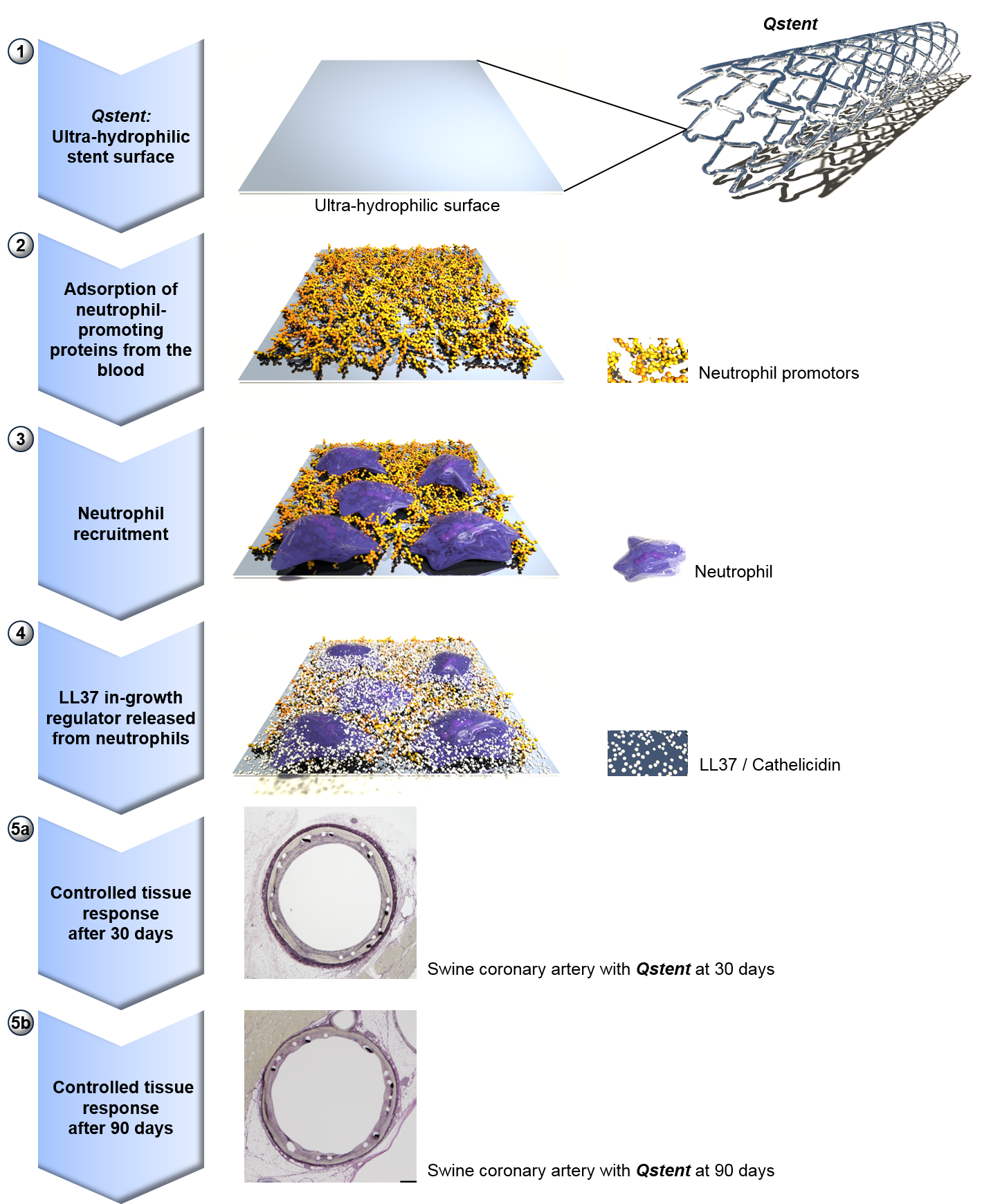Qvanteq’s biofunctional coating-free stent surface
The biofunctional Qstent technology can be applied to any implant surface and design, in particular metallic devices.
The Qstent’s surface mode of action was established in extensive in-vitro studies and takes advantage of factors intrinsically available in the blood. A physico-chemical treatment process creates a coating-free, durable and ultra-hydrophilic stent surface (1). Upon introduction of the stent into the blood vessel, this surface selectively engages neutrophil-promoting proteins (2) directly from patient’s blood. These proteins subsequently start a cascade (3) & (4) that ultimately results in a controlled tissue response (5a & 5b) such as: low thrombogenicity, increased speed of endothelialization and reduced neointimal hyperplasia.

